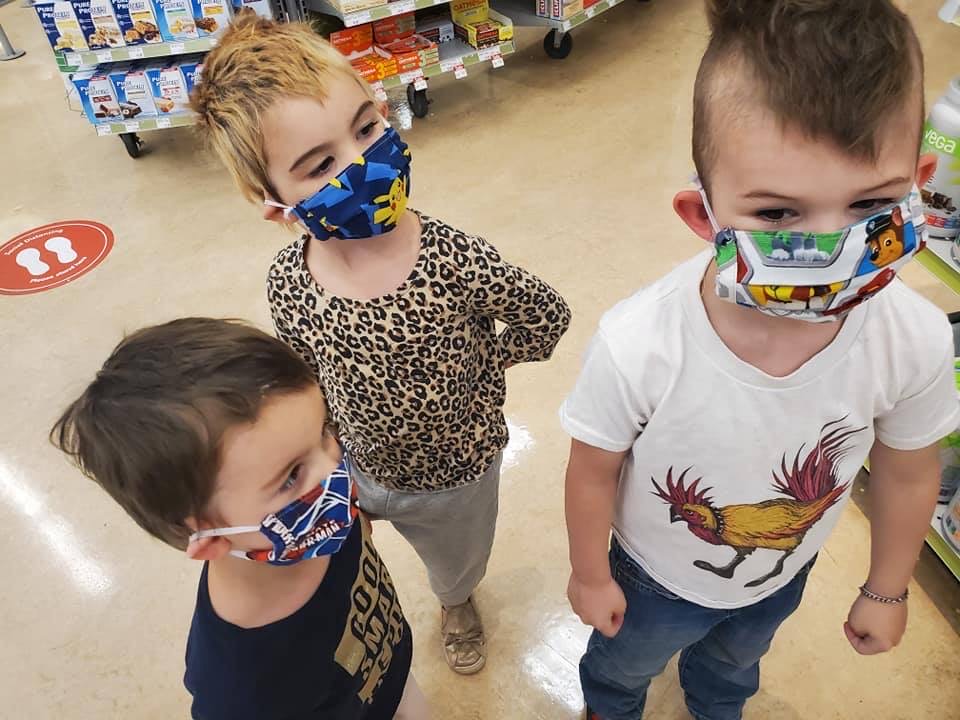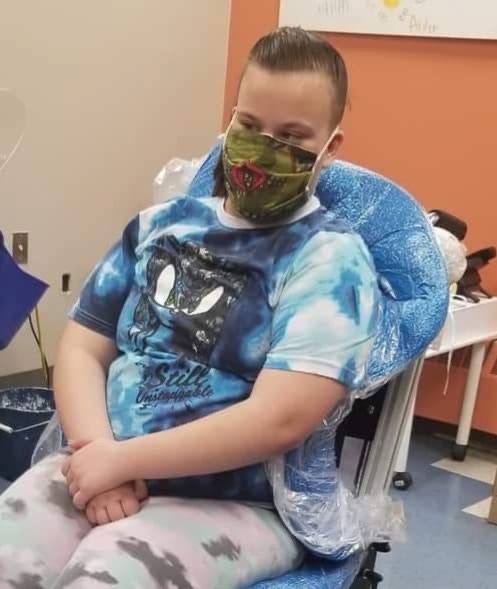Written by Grandview Kids Behaviour Analyst Alicia and Autism Therapy Assistants Maritza and Brittany

It was recently announced that as of July 10th, facemasks/face coverings will be mandatory for Durham Region residents in public indoor settings which can include: enclosed commercial spaces and public buildings (e.g., libraries, community centres). Many families with members who have ASD and sensory sensitivities are left wondering how they are going to support their loved one while implementing this rule.
Individuals with ASD have been managing A LOT of change over the last few months!
· Daily routines have been turned upside down
· Family, friends and support workers have been less available
· Individuals may be dealing with new or increased anxiety
· And so much more…!
As a parent or caregiver you may be worried that because your child is unable to tolerate a mask, they may be further restricted in the places they can go and the activities they can engage in.
Exemptions are available when necessary, but you might still be hoping that your child will one day learn to tolerate wearing a mask.
It seems that individuals with sensory challenges and other varying disabilities will be exempt from wearing a mask as well as people who are unable to remove the mask without help. This may bring some relief as we begin to prepare our children for the “new normal”; however, without knowing how COVID-19 management will continue to unfold, tolerating a face covering is now added to the list of skills that children of all abilities should begin to learn about when possible. Like any skill, it may take some children longer to learn it, so it is important to be patient and remain vigilant with our teaching strategies.
You may be asking yourself, “How will I go about doing this?” or maybe you are thinking “My child will NEVER be able to do that!”.
The 2 most important things we learned as behaviour analysts:
- NEVER say NEVER
- Start small and work up slowly
Now let’s discuss some strategies to use when teaching your child a new skill in your home:
Use clear and simple language
Although understanding may vary across individuals with ASD, some children may benefit from discussions around why wearing a face covering is important.
· Have the discussion more than once!
· Repeat. Repeat! Repeat! (did we mention repeat?)
· Use a social story or script (you can find one online or create your own!)
o Here is an example from The Boggs Center and Children’s Specialized Hospital: https://rwjms.rutgers.edu/boggscenter/Links/documents/ICanStayHealthybyWearingaFaceMask-F.PDF
Use Visuals
Visuals can be very helpful for individuals with ASD and other disabilities by helping them understand, prepare, and visualize something that is new and unknown.
· Show pictures of people your child may recognize wearing a mask and having fun!
· Show pictures of your child wearing a mask (this could be used as a cue to let them know when wearing a mask is required)
· Use a visual timer to show how long the mask is required (reminding your child it won’t be forever!)
Use “First and Then” Language and Visuals
‘First and Then’ language and visuals allow your child to know (and see when using visuals), what activity they are completing currently and what activity will occur next. Using ‘First and Then’ may help an individual transition to a location or activity that is not preferred if he/she is able to see that a preferred activity is coming next.
· For example: ‘first’ wear a mask and ‘then’ play with cars
· Example of preferred activities: bubbles, access to favourite toys, screen time, books

“But how do I get my child to wear a mask, or even look at a mask??”
This would not be a blog post by behaviour analysts if we didn’t stress the importance of reinforcement. Reinforcement is what increases the likelihood of a behaviour happening again in the future. In this case, the behaviour is interacting with and EVENTUALLY wearing the mask. As we probably know from experience, wearing a mask is not inherently motivating. For children, this is a classic case of, “what’s in it for me?” It is up to us as the parents and caregivers to find a way to reward wearing a mask to make it “worth it” for the child.
Reinforcing your way to “mask-wearing”
Start small! Provide immediate reinforcement after the desired behaviour.
· Begin by having the mask near your family member during enjoyable activities. Reinforce them for allowing it to be close to them!
· Example reinforcers are: tickles, high fives, praise, time with electronics, M&Ms
· You can also build reinforcement into mask-wearing by finding a mask with a favorite character or item. Have your child look at themselves in the mirror so they can see the cool designs.
Increase expectations slowly…
Be realistic about your expectations, but as your child begins to tolerate masks, increase the requirements over time.
· After your child has learned to tolerate being near a mask, start rewarding your child for holding the mask, and touching the mask to their face (begin without the expectation of having to wear the mask)
· When your child is ready to start practicing wearing the mask, begin with a short amount of time and slowly increase (e.g., 1 second, 5 seconds, 10 seconds). Remember using a visual timer may be helpful!
· Remember: no matter how small successes may seem, continue to offer reinforcement that is highly preferred by your child
When teaching your child a new skill, practice makes perfect is hard work, and it is okay if you need some support!
Individuals with ASD can have narrowed interests or focuses. This is important to consider when teaching a new skill like wearing a facemask. Include a variety of masks for them to try so you have options if one isn’t available or comfortable. Practice the skill at different times of day, in different places, and with different people.
The last few months have brought about a lot of change and it looks like change will continue to occur. Supporting individuals with ASD can be difficult and these are just a few tips to help you continue the journey of keeping your child with ASD safe and included during these changing times. Change can impact children and families with ASD in many ways. Reach out to professionals for direct assistance in teaching your child to tolerate and wear a mask, but NEVER say NEVER. With some support, you might be surprised by what your family member will be able to manage.
Check out more Grandview Kids articles
- “Grandview Kids became my life raft” – International Day for People with Disabilities
- December: Dates of Significance
- From the search for support to finding a village: Celebrating Giving Tuesday
- Scarlett sparkles with hope in every step: Grandview Kids 2025 Holiday Campaign
- Volunteer Spotlight – Heather A.
